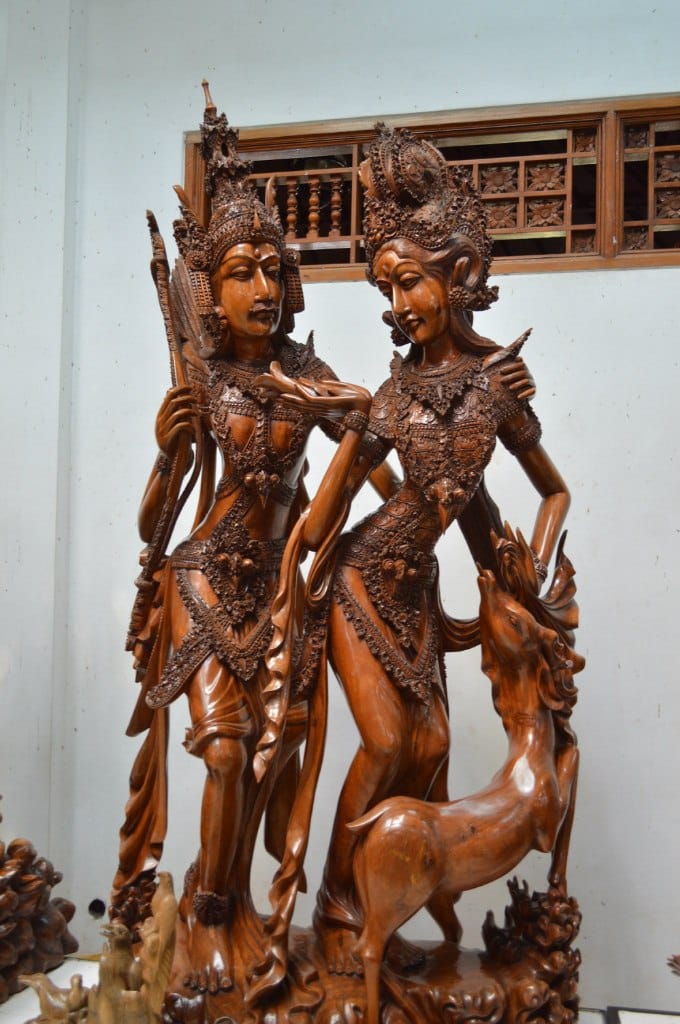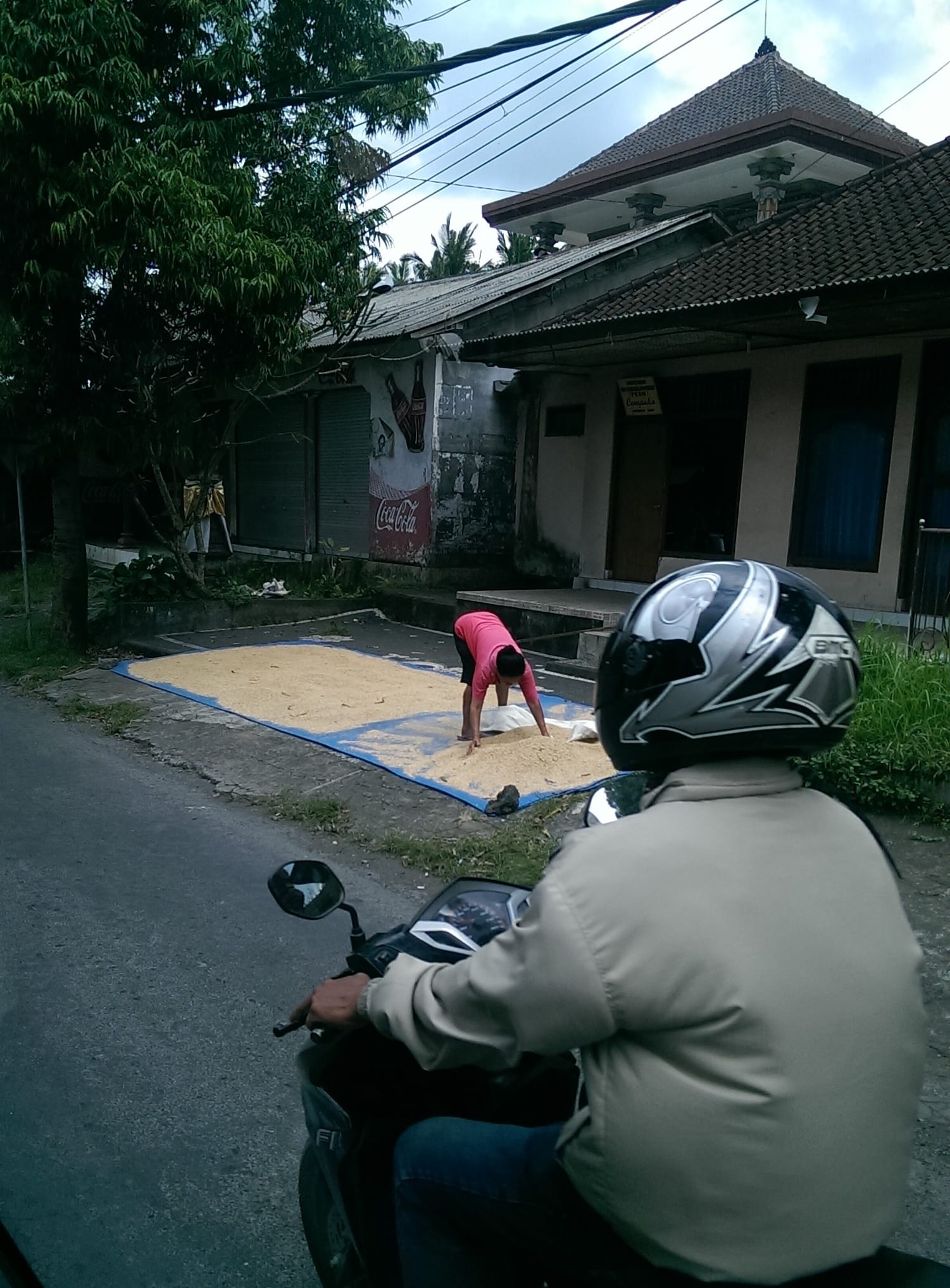WHY SO ENTICING, BALI?

Bali... Those 4 once authentic letters are now full of hype and crowded with tourists from around the world. And I simply can't walk past this magic island because it was my first exotic destination in a distant 2014 when there were less tourists and more authenticity (or so it always seems in hindsight :P).
Anyway, I'm kicking off my travel blog with a post about Bali. That trip really opened my eyes to the mesmerizing power a place can have. It was a bit of a revelation for someone like me, who usually leans towards the pessimistic and grumpy side of things.
I want to share the Bali magic with you. To figure out why it's so special, I'll dive into its culture, traditions, modern trends, and my own impressions of this godly island. That's what I will do here.

A trendy spot or a genuine brand of paradise?
A bit of both, I think. I am writing this paragraph in 2021, it seems like everyone I know has a friend or two who've explored Bali. While it's a hotspot for visitors from Australia and China, it's also gained crazy popularity among CIS residents. In 2019, there were a whopping 6.3 million direct foreign tourist arrivals. Now, Indonesia isn't short on exotic islands, so what makes Bali stand out? Take a peek at Sumatra, and you'll find it's mostly geared towards plantations and mining. Java's busy with farming and commerce, and Jakarta, the capital, is a bustling metropolis with its 36 million-strong population—definitely not the go-to for relaxation. So, why Bali?
Bali's standout feature lies in its ability to deliver unique experiences despite its modest size. Think of the lush jungles of Ubud, the sandy shores of Nusa Dua and Kuta, the surf scene at Nusa Lembongan, and the nightlife around Legian and Seminyak. Add the natural wonders sprinkled at every turn, and you've got a magical haven enveloped in lush greenery. No wonder Bali is one of Indonesia's most densely developed hotel areas, with 521 star-rated hotel projects and 110,000 registered hotel rooms.

Adding to Bali's allure as a tourism hub is the trend towards authentic living and experiences, coupled with a revival of interest for indigenous cultures. Spiritual coaching, healing, meditation, yoga, mindfulness, and the like— these practices aren't even native to Bali but have been imported and championed by entrepreneurs from abroad. Bali's picturesque setting makes it an ideal host for these transcendent practices and a haven for digital nomads. And there you have it.

Religion is more of a default mode worldview for locals
Let's get back to some basics for the bigger picture. Bali is a small island, part of 17,000 islands that make up the country of Indonesia. It's widely diverse in all aspects with 300 ethnic groups and 742 different languages. In line with many Eastern nations, religion serves as the fundamental worldview for locals, influencing their culture and identity. While Islam (87%) predominates as the major religion in Indonesia, Bali charts its own spiritual course.
Bali has its own take on Hinduism – Balinese Hinduism. It's a blend of Indian philosophy and indigenous spirituality. This spiritual practice revolves around the strong belief that nature and its elements intricately shape our lives, actions, and demeanor, infusing this worldview with a touch of magical realism.
Here's how it operates: positive and negative energies coexist in and around us. To preserve harmony in the world, humans engage in daily rituals with fervor. Offerings, typically consisting of fruits, vegetables, and flower petals, are presented to benevolent spirits. Simultaneously, offerings are made to please malevolent forces and soften their anger. The locals approach these practices with determination and commitment that I have seldom witnessed elsewhere.

Moreover, this isn't a once-a-day affair; they perform these rituals four to seven times daily! To make the worshiping process more accessible, mini-shrines are scattered literally everywhere — from shops and roads to forests. The ubiquity of these shrines reflects the pervasive nature of spirits, which can live in everyday items such as kettles, hair, bottles, mud, clothes, and everything that meets and not-meets the eye.
Interestingly, elements of nature have their own way of worshipping. Take, for instance, a unique celebration where the Balinese honor metal. They temporarily step away from their daily routines, adorn metallic objects like planes and computers, and offer prayers for a few precious minutes. This ritual is a gesture of gratitude and acknowledgement to the metal element for enhancing their lives. AMAZING!
Religion is so harmoniously embedded in the locals' worldview that it leaves you feeling like a savage intruder in the sweet-toned Balinese environment.


Home sweet Home vibes
Home or rather a family institution is another sacred component of the Balinese lifestyle. The houses represent family complexes, comprising six fundamental elements: a temple, a doorway with its screen and split arch, a sleeping area with its open verandah, a raised barn for rice storage, a kitchen, and a bathing area.
Spirituality is a profoundly serious aspect of life here, serving as the nucleus around which the locals' lives revolve. The shrine section of the house is consistently crafted from costly stones and adorned with precious gems, while the actual living space is excessively modest to the western eye.

Apart from divine spirits, there is a very strong community spirit that shapes its hierarchy. Family compounds, where knowledge about household chores and religious activities is being passed from the older to the younger generation, are the basic unit of that interconnected system.
One tier above, you find the Banjar — a community of families living in the same village. They assist each other in everything: from helping to crowdfunding someone's shrine сonstruction. Communal temples and spaces for social welfare and cultural values discussions are also compulsory parts of this social structure. These traditional bonds unite the Balinese on the physical and spiritual planes, providing them guidance and instructions on a harmonious way of existence.


Art isn't about beauty
Stone and wood carving are the most widespread art forms which you can spot everywhere. They are so well-fit, that they appear to be an intrinsic part of nature. Though it's much more than just an artistic expression. Craftsmanship is a form of communication with spirits. Interestingly, these activities are exclusively undertaken by men, as they are believed to possess a superior connection with the material world. In contrast, women take on the role of presenting offerings to spirits, as they are considered the intermediaries with the spiritual realm.
All statues and artworks are carved out of a solid pieces of wood. Before starting the work, a craftsman sits himself in front of the piece of wood, engages in a long meditation, and then asks about the material form the wood desires to acquire. Only after receiving the answers, does he start the carving. AMAZING #2





Ceremonies as a mode of existence
The idea of a human as microcosm explains the need for rituals and ceremonies accompanying every aspect of the Balinese life. The order exists everywhere and in everything, and rituals help maintain it.
Childbirth is probably the most important and complex celebration in the Balinese culture. There can be up to 13 life-cycle rituals related to that sacred event.

- A pregnant woman is not allowed to enter a temple because she is 'unclean' during this period. When she is into three months of pregnancy, she and her husband are going through the cleansing ceremony.
- After a baby is born, its placenta is placed into a coconut shell and buried by the house entrance. By doing this, parents attract spiritual guides for their child.
- After twelve days of being alive, a baby's soul is firmly secured in their body. That's why around this time a child receives a name. There are only 4 names: Wayan, Made, Nyoman, and Ketut. Parents know their babies' names before they are even born.
- At 42 days, a baby goes through the ritual of purification. From that time on, a mother can return to her daily religious activities.
- Another 105 days after birth, a child isn't allowed to touch the ground and is being carried around by their mother. It's done to protect their weak soul from evil spirits. After that time period, a baby can sit on the ground. Though they still can't crawl as it's forbidden. Yet again: evil spirits are believed to be close to the ground.
- At 210 days the child receives its formal name in a traditional ceremony and its soul is ready to become part of the material world.


Entering adulthood
Another curious ritual is the one concerning teenagers' passage from puberty to adulthood. The best way to symbolize that change is...Tooth-filling, yes!
The ritual is designed for both males and females, and must be performed before marriage. It's about filing down the canine teeth. It's underpinned by a strong belief that canines are 'animal' teeth, they embody the savage aspects of a human personality and therefore must be smoothed out.
If those teeth aren't filed before death, the belief states that that person will be mistaken for a savage animal by gods. And the ending would be grim, because the Balinese expect reincarnation after death.


Death and all
Much like birth, death is a crucial part of the soul cycle. Cremation is the only way to attain liberation, as a decaying body is no more than a confine for the eternal spirit.
However, the cremation ceremony can be a considerable financial undertaking, given the expenses associated with rituals and requisite objects. In that case, a body is temporarily buried until the final ritual.
The procession takes place on the streets with lots of people in colourful clothes, carrying offerings and engaging in musical performances. It's a joyous celebration, symbolizing the individual's progression to the next phase. The act of cremation serves as the liberating force, bringing the soul one step closer to the divine state.



LUVAK COFFEE hell
Meet this adorable creature, the Asian palm civet. In the wild he treats himself to coffee beans from trees once in a while. However, some "entrepreneurial" individuals have found a cruel way to monetize these exotic animals—by selling "the most expensive coffee", harvested from their feces. Due to a unique fermentation process in their stomachs, the digested coffee beans are branded as 'exquisite' and 'rich'. In reality, it's just ordinary coffee, and the entire process involves the vicious exploitation of these animals ;(


LOCAL creatures
We have the sweetest creatures of dog fruit bats selling their souls for sweet soda. Then annoying, cheeky, and aggressive monkeys. Cure frogs and everyone else.




RICE, the staff of life
Just a lady casually drying rice on the side of the road. A staple of all asian staples.





White Water rafting, YES, YES, YES
Paddling down the Ayung River with pretty real and huge obstacles. We even lost one guy but he was safely rescued. That's a true lifetime adventure!

